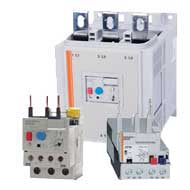Literature
Technical Tips & FAQs
Theory and Operation of Overload Protection Used in CEP7(S) Overload Relays
Question:
How do the CEP7(S) solid-state electronic overload relays detect and react to overload conditions in a motor?
How can I reset the overload?
How quickly will the overload reset?
Answer:
Theory of Operation
CEP7(S) solid-state relays have been designed to mimic a motor's heating and cooling profile. Therefore, the motor's trip and reset points are a function of temperature due to thermal input in the form of electric power.
The solid-state overload relay device duplicates the heating effect by using an internal capacitor and an algorithm on the circuit board. As the load current increases, the capacitor will charge up until an overload occurs and trips out the overload relay. Then the capacitor will discharge slowly, which would represent a normal cool down time in a motor before the motor can safely by re-started.
Resetting the Overload
CEP7(S) solid-state overloads can be manually or automatically reset but the device's internal capacitor "remembers" the previous thermal level. Cycling the 3-phase power input will not reset the overload relay as doing so will not affect the operation of the capacitor. For example, you cannot force the capacitor to discharge faster to reset the overload relay quicker.
If the device is reset too soon, the overload relay will trip very quickly when exposed to an increased load if the motor has not had time to cool properly.
The normally closed contact can be re-closed in Manual Mode by pressing the Reset button. In Automatic Mode the normally closed contact is re-closed by the overload relay itself through an internal mechanism in the overload relay
Time to Reset
The automatic or manual reset function time varies but for general applications a 2 to 3 minute reset time can be expected. After this time period, the normally closed trip contact can be re-closed and starting of the motor contactor coil can be achieved by the control scheme used with the motor starter.
Categories: Motor Protection
1830 ROK519778

